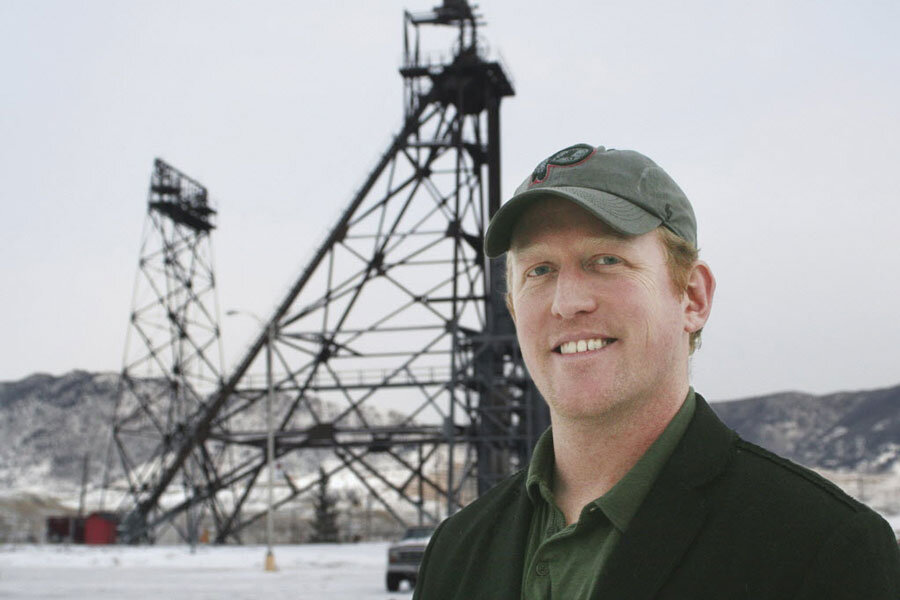Who shot Osama bin Laden? Does it matter?
Loading...
| Washington
Who shot Osama bin Laden? Does it matter? Those questions are roiling the secretive world of US special operations forces now that former Navy SEAL Robert O’Neill has publicly claimed that he killed the former Al Qaeda leader during the 2011 US raid on Bin Laden’s Pakistani hideout.
Other SEALs who were on that mission have given different accounts of Bin Laden’s final moments. The result has been a Rashomon-like montage of competing stories that, if nothing else, highlights the difficulty of sorting out the truth of an intense, fast-moving moment of confrontation.
“At this point, who didn’t shoot bin Laden?” tweeted Huffington Post associate politics editor Igor Bobic on Friday.
Mr. O’Neill confirmed his identity and gave his account of the raid to The Washington Post and other publications in advance of a lengthy taped interview with Fox News scheduled for broadcast next week.
He says he was the second man in a multi-SEAL group moving up the staircase inside the Pakistani compound residence when bin Laden himself appeared at a door. The point SEAL fired, but missed, in O’Neill’s version of events. This point man then leaped at two women in case they carried explosives.
O’Neill kept moving forward, and fired two fatal shots into the 9/11 architect, he says.
Other SEALs who were on the mission have questioned Mr. O’Neill’s account. They say the still-anonymous SEAL point man didn’t miss, and that bin Laden had already fallen when O’Neill fired.
That’s the version given by another SEAL Team 6 member, Matt Bissonnette, in his best-seller “No Easy Day,” published two years ago under the pseudonym Mark Owen.
Mr. Bissonnette adds that he fired at bin Laden in tandem with the second assaulter, presumably O’Neill. That further complicates an already confusing clash of testimony.
The public is left with the impression of a SEAL team that was cohesive on the attack but has since broken apart by squabbling over credit, lured by the money from speeches and books.
“As far as I’m concerned every SEAL is a hero. But squabbling over who killed Bin Laden is unseemly,” tweeted Council on Foreign Relations senior fellow Max Boot.
Is this dispute damaging the reputation and perhaps the effectiveness of the nation’s most elite military units? The senior US military leadership is clearly worried about the spread of public accounts from SEALs and other special operations forces.
Senior Navy officials sent all SEALS a letter last week urging them to comply with their code of silence about operational details and to avoid taking public credit for team exploits.
“The point they make is that it took so much more than the final trigger pull to kill bin Laden, so why should one SEAL assume the moniker, ‘The One Who Killed bin Laden?’ ” writes “Frumentarius,” an anonymous former SEAL, in the Special Operations Forces Situation Report (SOFREP), a well-sourced blog.
“One can easily pick up on the apparent shaming,” adds SOFREP.
But the situation’s not that simple, say others. Former SEAL Bissonnette, for example, has pointed out that top Pentagon officials cooperated extensively with the producers of “Zero Dark Thirty,” the 2012 Hollywood thriller on the raid. Former Secretary of Defense Leon Panetta has published a book including insider details of the raid’s preparation and execution, from his point of view.
Given that, why should the person who risked his life in the attack be the one who has to keep most quiet?
And the temptations are increasing in a media landscape where producers and publishers are desperate for content gripping enough to steal the attention of fickle consumers.
Perhaps SEALs and other special operations team members are now in the situation long faced by professional athletes, writes former SEAL Brandon Webb in SOFREP. They’ve been elevated to role model status by the media-industrial complex. That means adulation – but also scrutiny and risks of condemnation for falling short of the public’s unrealistic expectations of behavior.
Maybe special operations leaders could learn something from Nike’s famous “I’m Not a Role Model” ad with basketball great Charles Barkley.
“I’m not a role model. I’m not paid to be a role model. I’m paid to wreak havoc …” says Barkley in the spot.






